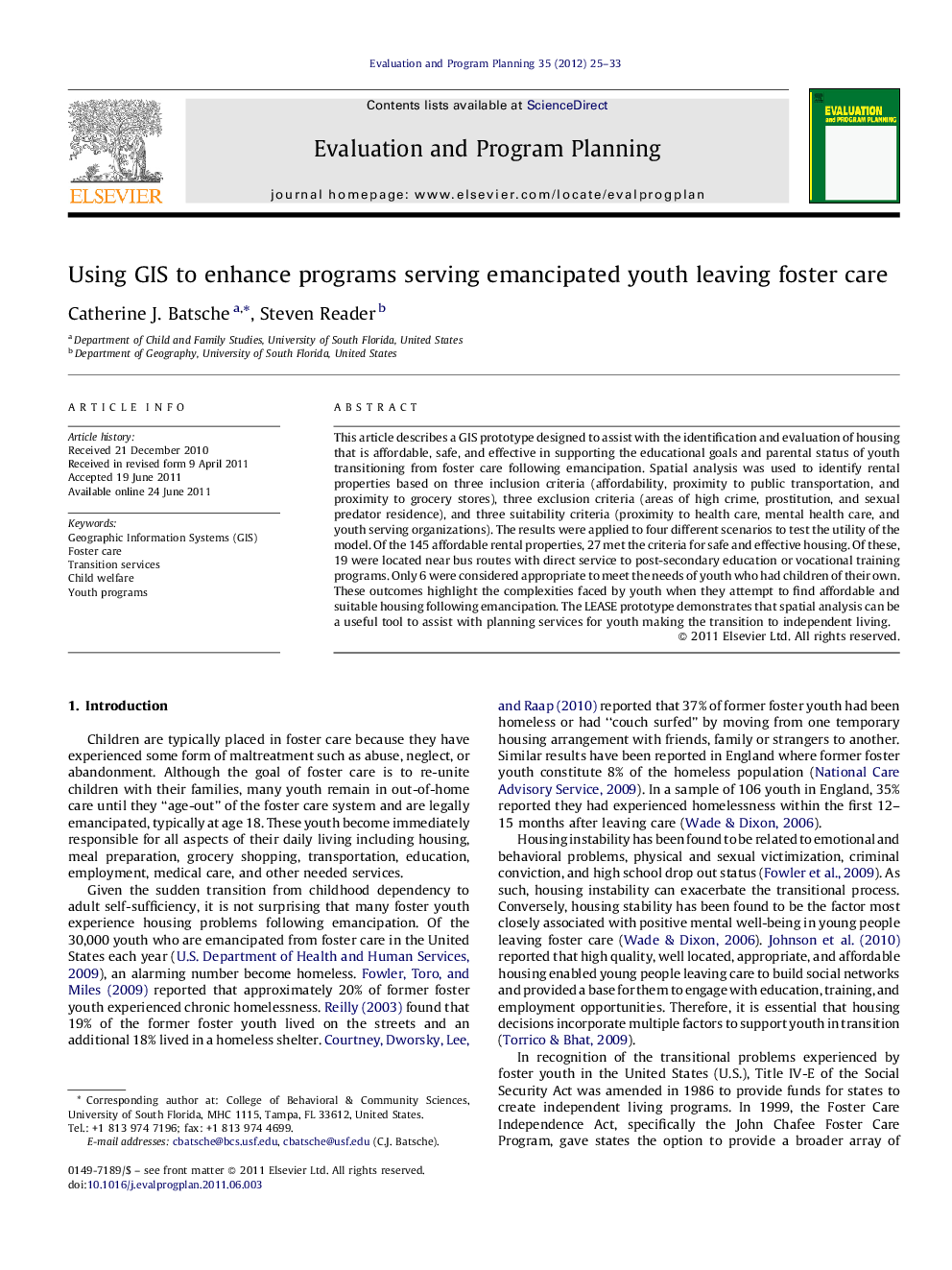| کد مقاله | کد نشریه | سال انتشار | مقاله انگلیسی | نسخه تمام متن |
|---|---|---|---|---|
| 322531 | 540085 | 2012 | 9 صفحه PDF | دانلود رایگان |

This article describes a GIS prototype designed to assist with the identification and evaluation of housing that is affordable, safe, and effective in supporting the educational goals and parental status of youth transitioning from foster care following emancipation. Spatial analysis was used to identify rental properties based on three inclusion criteria (affordability, proximity to public transportation, and proximity to grocery stores), three exclusion criteria (areas of high crime, prostitution, and sexual predator residence), and three suitability criteria (proximity to health care, mental health care, and youth serving organizations). The results were applied to four different scenarios to test the utility of the model. Of the 145 affordable rental properties, 27 met the criteria for safe and effective housing. Of these, 19 were located near bus routes with direct service to post-secondary education or vocational training programs. Only 6 were considered appropriate to meet the needs of youth who had children of their own. These outcomes highlight the complexities faced by youth when they attempt to find affordable and suitable housing following emancipation. The LEASE prototype demonstrates that spatial analysis can be a useful tool to assist with planning services for youth making the transition to independent living.
• This paper describes a GIS prototype for foster youth housing.
• The GIS prototype was tested with four different scenarios.
• The prototype demonstrates the limited housing choices for former foster youth.
Journal: Evaluation and Program Planning - Volume 35, Issue 1, February 2012, Pages 25–33